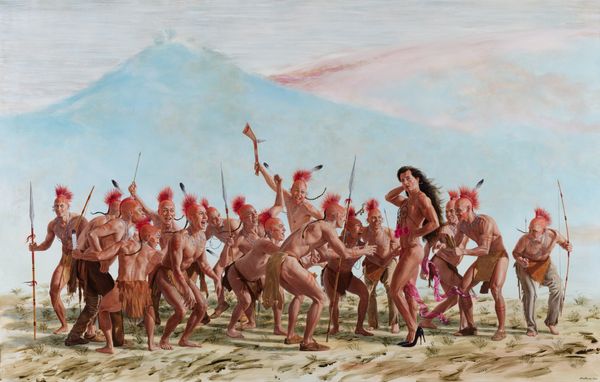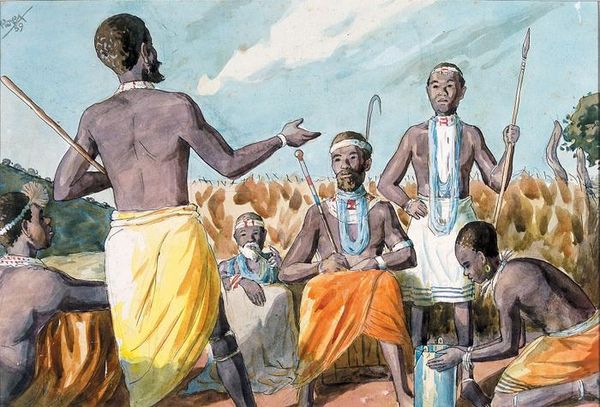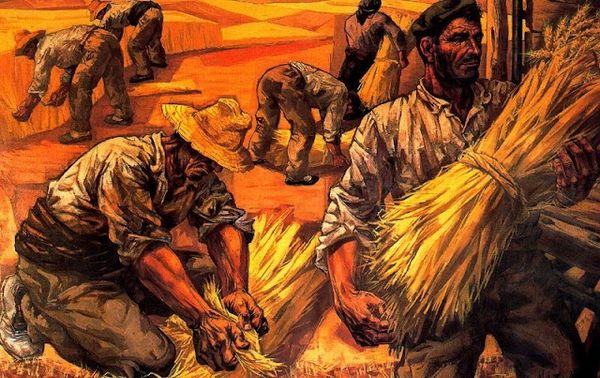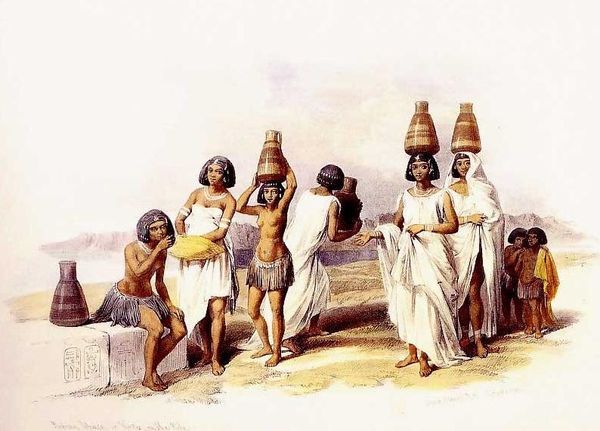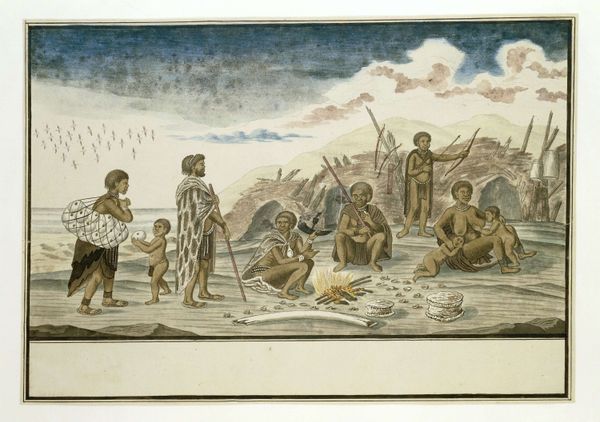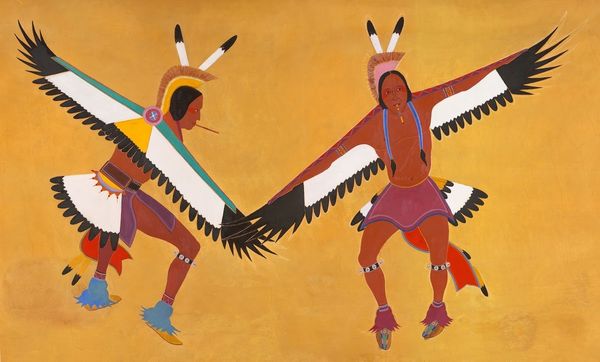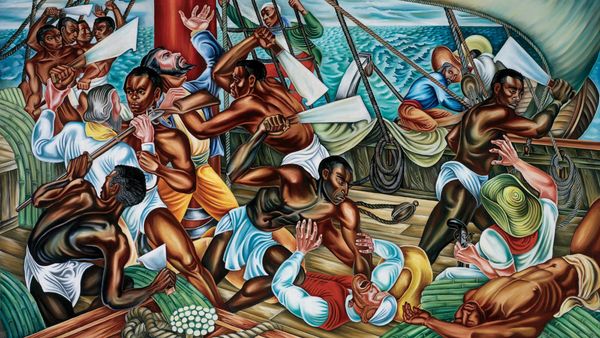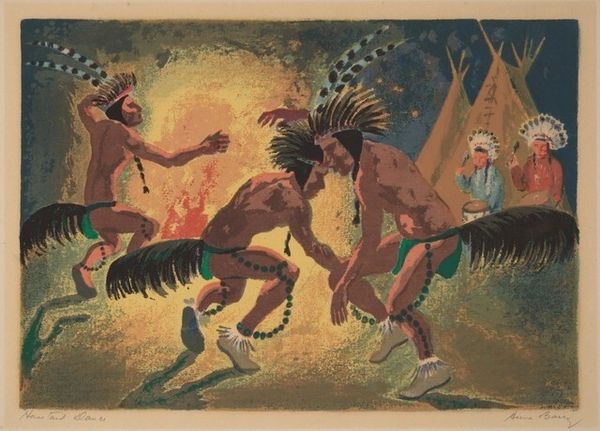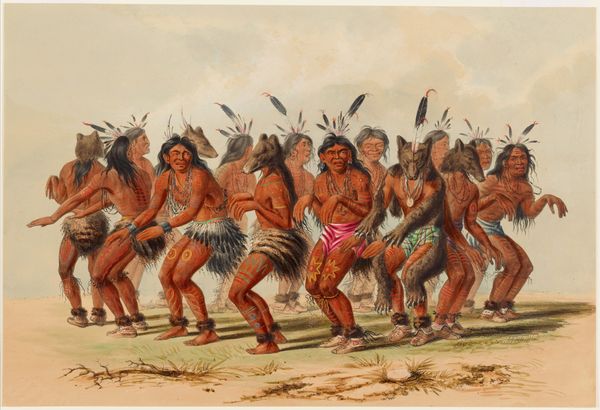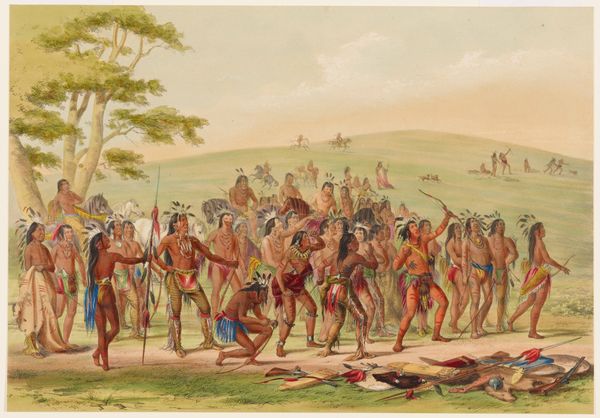
painting, oil-paint
#
african-art
#
painting
#
oil-paint
#
figuration
#
oil painting
#
mythology
#
genre-painting
#
history-painting
Dimensions: 65 x 50 cm
Copyright: Werner Peiner,Fair Use
Editor: This oil painting is entitled "Lionhunt," and it was created in 1947 by Werner Peiner. It has a fascinating narrative quality, like a scene plucked from a historical account. I’m curious, what historical context is essential to interpreting this painting? Curator: Well, Peiner painted this shortly after World War II. Considering his involvement with Nazi propaganda during the war, this seemingly straightforward genre scene becomes loaded. How might depicting an "exotic" lion hunt, in a rather idealized and romanticized manner, serve as a form of deflection, perhaps even rehabilitation, for an artist with a compromised past? Editor: That’s a powerful perspective! So, by focusing on a distant, seemingly apolitical subject, Peiner might be attempting to distance himself from the immediate concerns and judgments of postwar Germany? Curator: Precisely. Consider the figures themselves. They're rendered with a stylized, almost primitivist aesthetic, reminiscent of earlier colonial depictions of African peoples. What message does that aesthetic choice convey to its contemporary European audience? Editor: Perhaps it's about reinforcing a sense of Western superiority, portraying non-Western cultures as simpler or less developed. It feels almost like a nostalgic yearning for a pre-war colonial order. Curator: Exactly! And that ties into the politics of imagery – the way power structures influence representation. How do you think exhibiting works like this contributed to the postwar cultural landscape and its evolving sense of identity? Editor: It's unsettling to think about how art can perpetuate certain views. I never would have thought of those socio-political questions related to postwar cultural representation and politics by just viewing this work on its face. Curator: That is why context matters! It forces us to critically examine the motivations and effects behind seemingly innocuous imagery, enriching our own critical analyses of visual art.
Comments
No comments
Be the first to comment and join the conversation on the ultimate creative platform.


